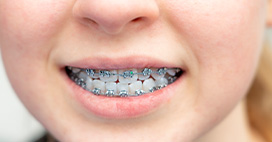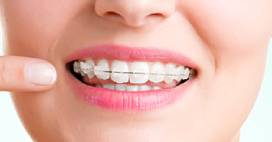Types of Braces
Traditional metal braces
Traditional braces can correct a wide range of dental issues, including crooked, gapped, rotated or crowded teeth. Braces improve your smile’s health, function and appearance. Braces can also reduce the risk of gum disease and tooth decay, as well as prevent more serious oral issues like jaw misalignment or TMJ disorders.
Age : Simply put, there is actually no age limit for someone to get braces. According to the American Association of Orthodontists, there is a high number of patients fitted with dental braces every day over the age of 18. Typically, the only requirements dental professionals have is a healthy jaw bone and permanent teeth.
Treatment time :The average treatment time for traditional metal braces is 12-24 months. Someone with a mild overbite and only a couple of crooked teeth may only need 12 months. Someone with a severe overbite, a crossbite, several crooked teeth, and impacted teeth may need every day of that 24 months.
Pain : Though there may be a little discomfort when first getting braces, most orthodontic patients report very little pain and a much easier time adjusting to braces than they anticipated.
Ceramic / Clear braces
Clear braces are a type of orthodontic treatment used to straighten your teeth. They function similar to metal braces -they can correct a wide range of orthodontic issues, including crooked, crowded, gapped and overlapped teeth. Clear braces are discreet and less noticeable than metal braces. Many orthodontists offer clear braces for adults and teens. However, they are relatively just a little bit more prone to staining, and more fragile than traditional metal braces. So you have to be careful !



